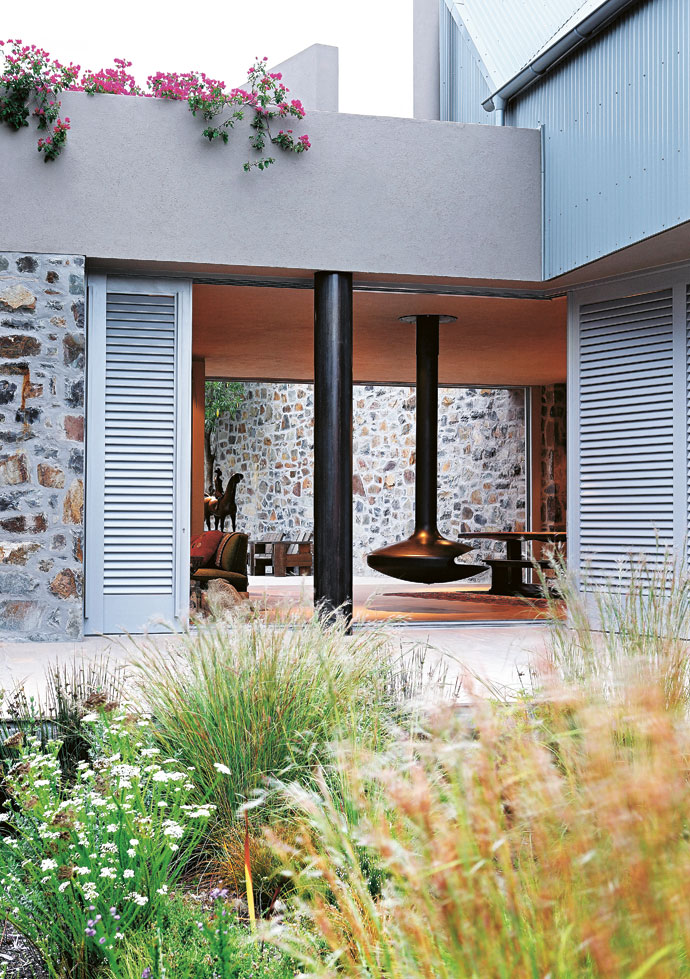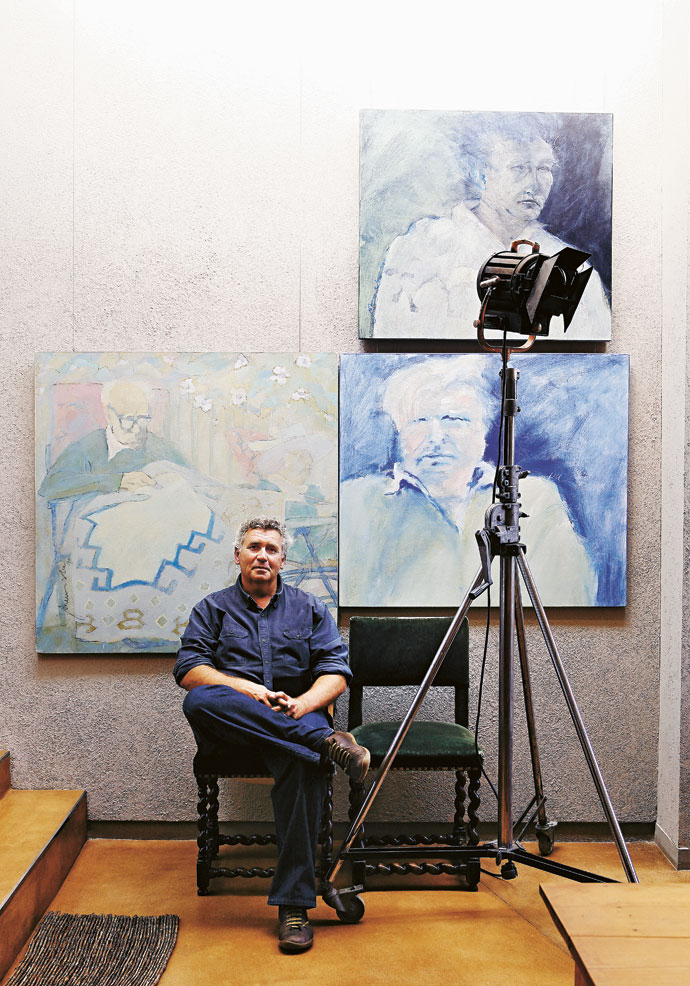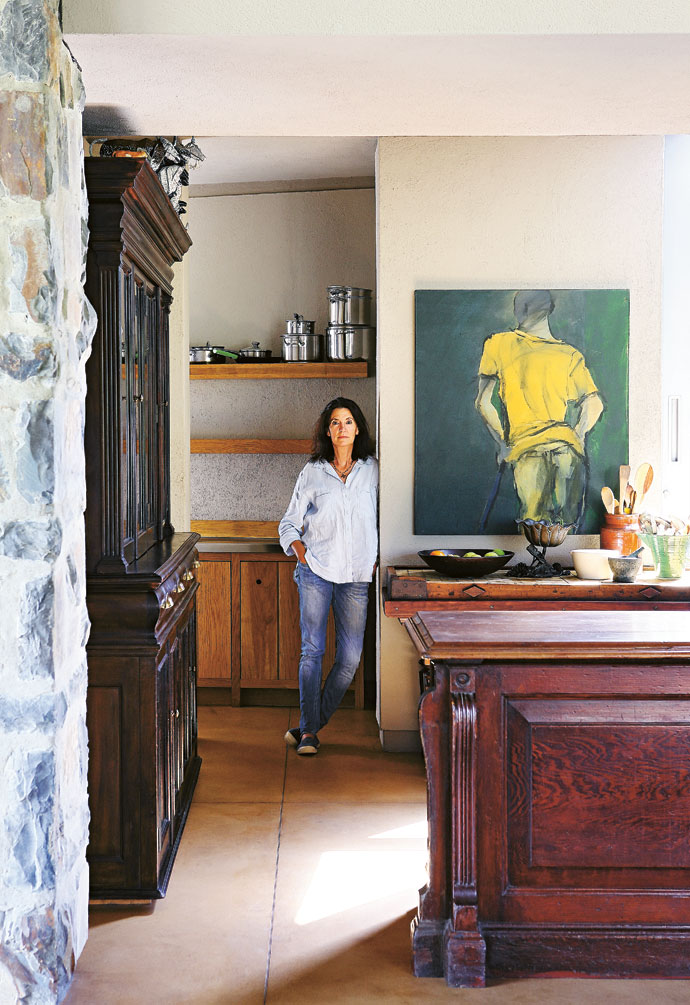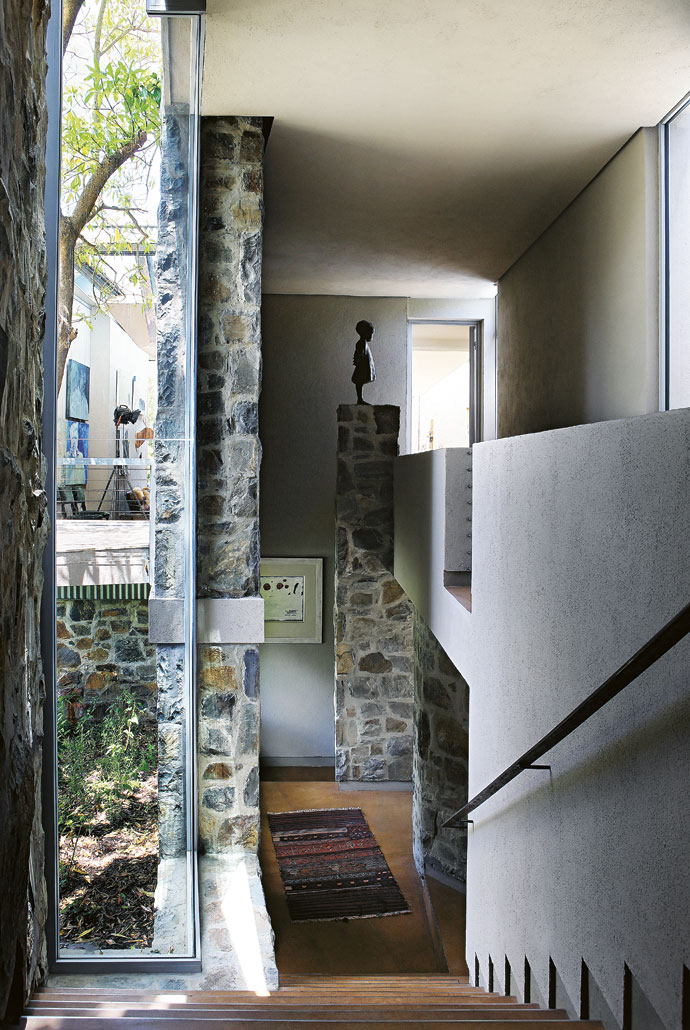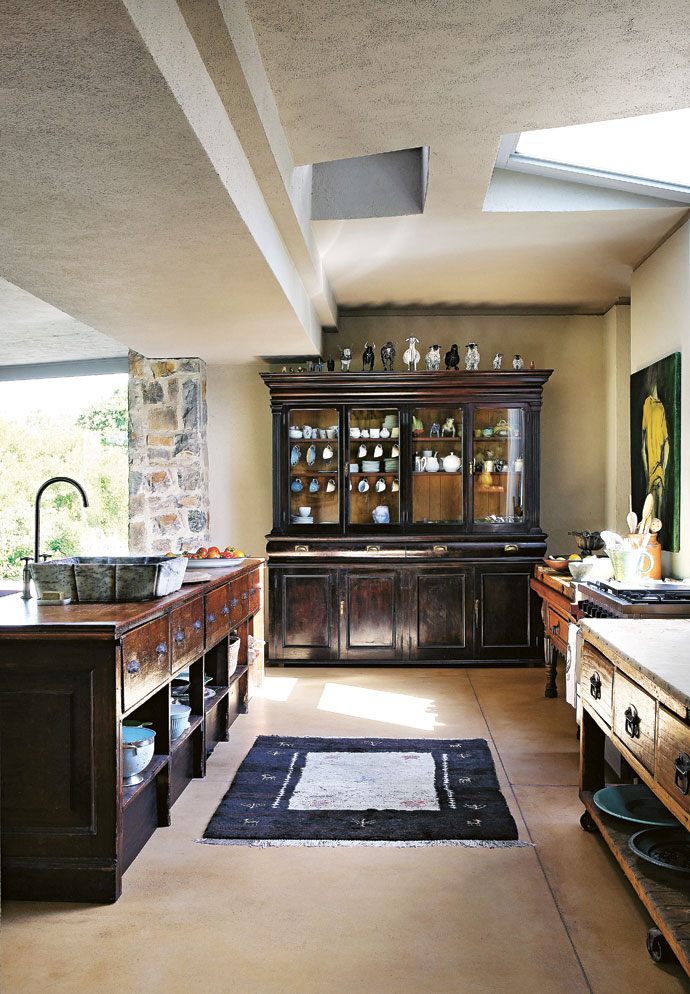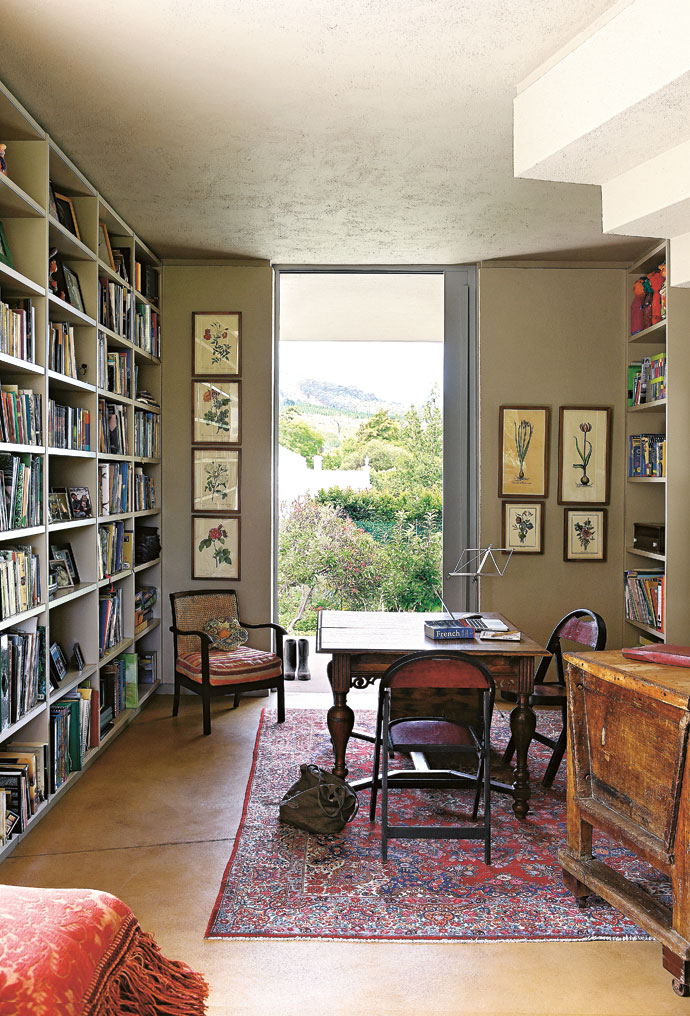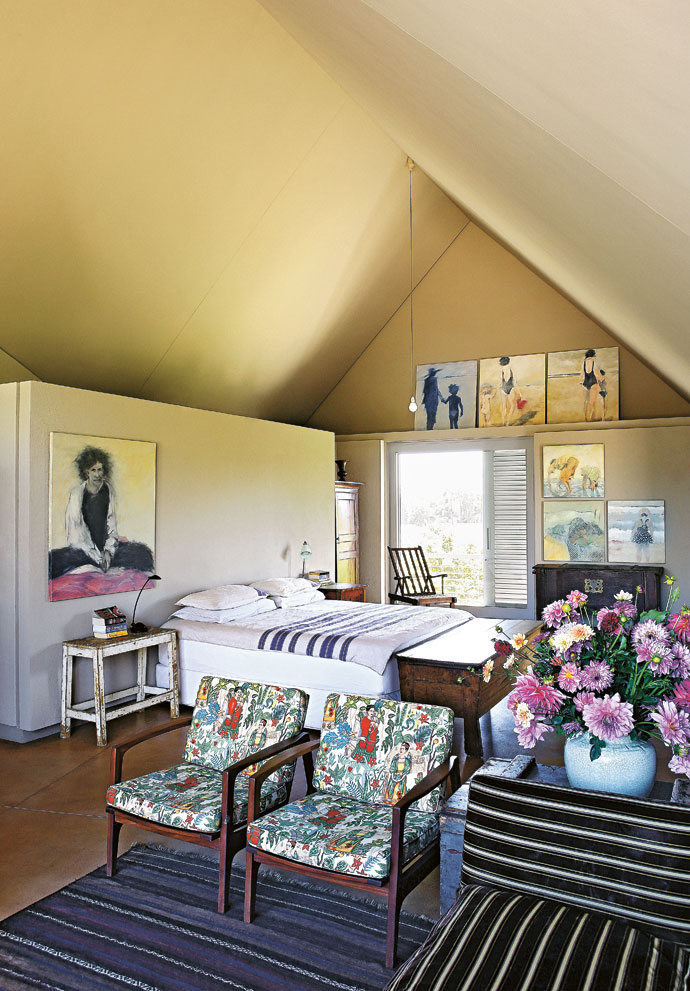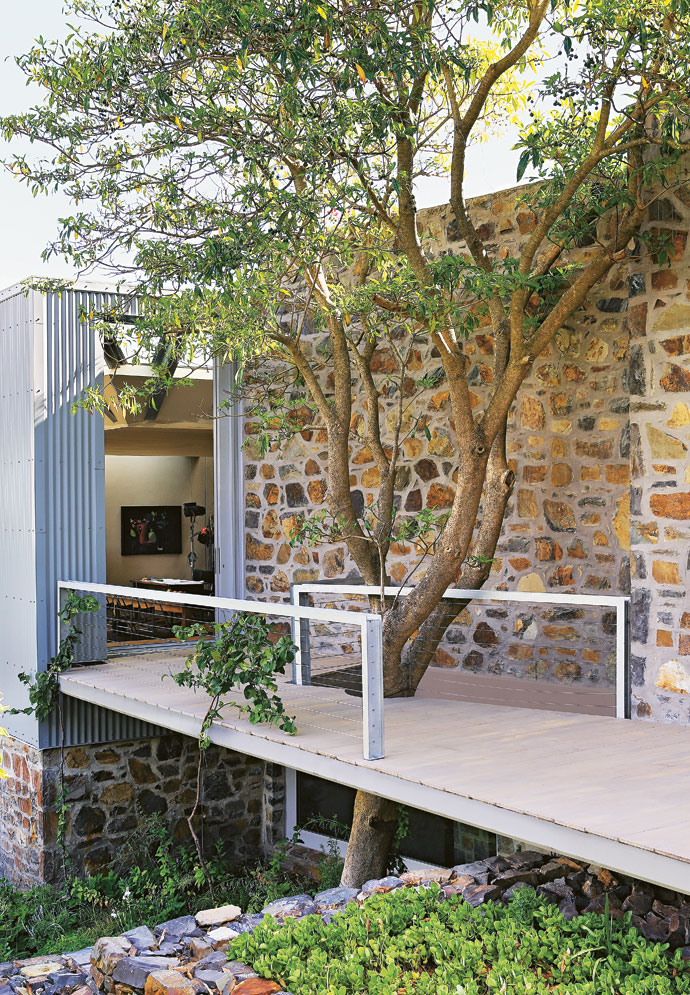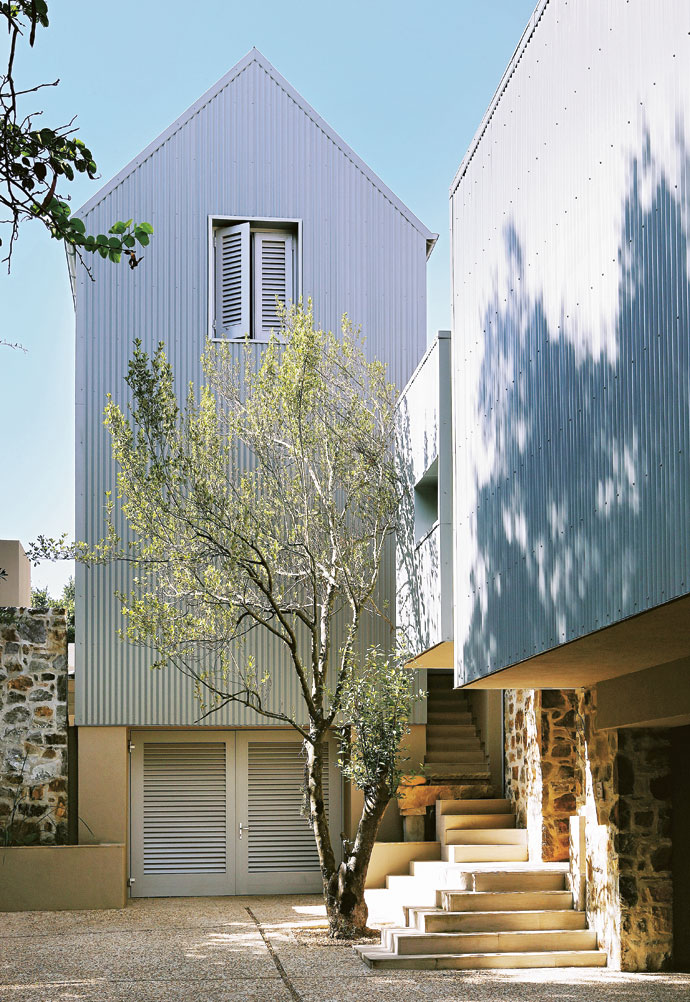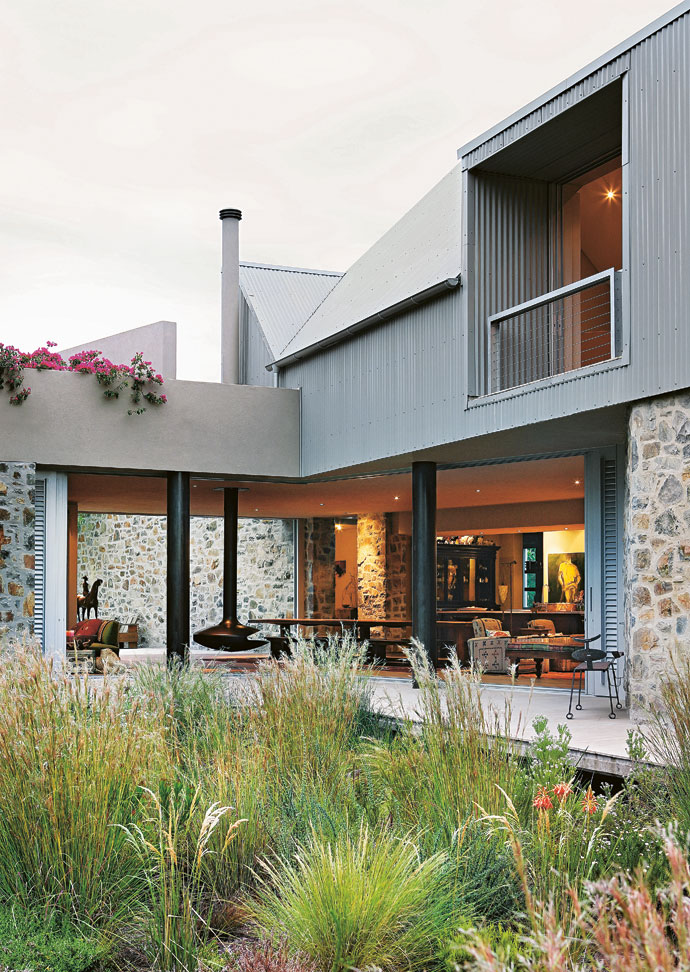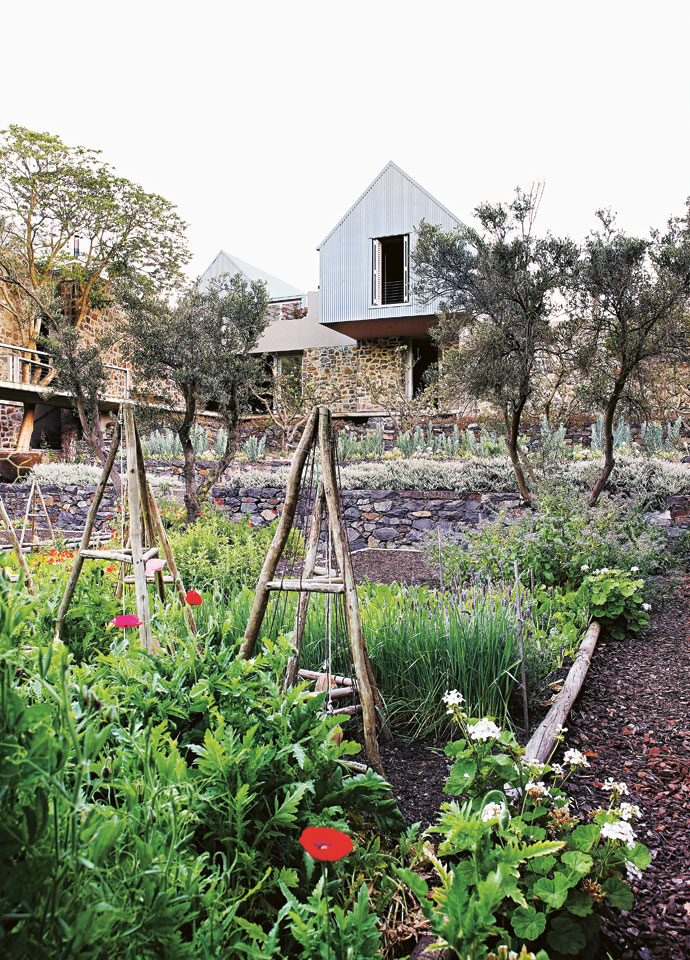“A modern farmhouse in a historical suburb” is how René and Johann Slee describe their new home.
Johann and René Slee love the adventure of turning a living space into their own. Their first home – in Greenside, Johannesburg – was initially “really ugly”, but its salvation was a huge pin oak in the garden that enfolded the structure and sheltered the entire stand. The tree rendered the property irresistible and, after a bit of a spit and polish, the house beneath its leafy bough began to bloom.
Some time later, the couple traded their tree-sheltered Joburg abode for a property with spectacular views, then a tree house in a forest setting, before taking a huge jump and relocating to Stellenbosch in the Western Cape.
After seven enjoyable years of living on Dorp Street – “the busiest street in the universe” – the couple happened upon a property brimming with potential.
Johann, who has an intense appreciation for local farm structures and is inspired by the colours, textures and climate of Africa, jumped at the opportunity to build the family’s new home from scratch. His architecture reflects the clever simplicity of farm structures linked together to form a cohesive unit, so the decision to build a corrugated iron and stone farmhouse with enough space to accommodate his entire family made perfect sense.
The final product is a triumph. Designed in such a way that he and René are not even aware of empty rooms when the children are not there, the house includes a studio for Johann, a large open living space revolving around the kitchen, and a small office for René.
“The house consists of four ‘farm sheds’ linked by stone ‘kraal’ walls,” explains Johann. “All the structures are north-facing to maximise available sunlight and were meticulously placed to make the most of the site’s spectacular views. The over-sized windows serve as glass walls and can be slid into the stone cavity walls, so in effect the house is like a large veranda on wind-free days.”
Top-notch insulation, double glazing and movable shutters keep inclement weather at bay while allowing the natural flow of air through the house. Solar panels heat bathwater and the swimming pool in summer, and boost the central water-heating system in winter.
On one side of the house, abutting a nature reserve, René created a meadow of indigenous grasses planted with fynbos on which the house appears to float. “A wild garden such as this needs little upkeep,” she says. “The plants grow as they would in nature, and there are no flower beds or planned lines.”
On the other side of the house, the couple “farms” on what was once a tennis court.
Perched on the historical bank of the Eerste River in an old suburb populated by ancient oak trees and in a slightly elevated position, their new home offers uninterrupted views of the Stellenbosch mountains. It’s a thoroughly rural aspect from which one is almost entirely unaware of other dwellings in the vicinity. “It’s like living on a farm,” Johann says. “And that’s what grabbed us.”

